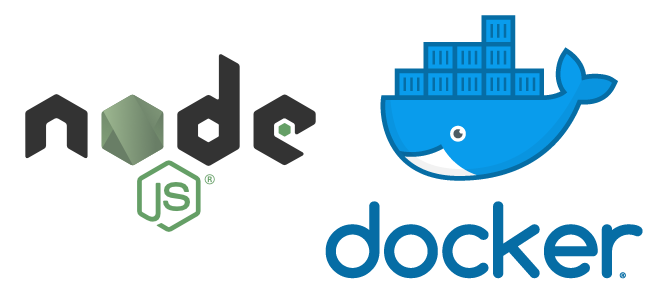

- #Nodejs docker how to#
- #Nodejs docker install#
- #Nodejs docker archive#
- #Nodejs docker pro#
- #Nodejs docker code#
dockerignore file in the same directory as your docker file and put the following lines of code in it. Open the newly created file in your code editor.Ĭreate. This is a simply ‘hello world’ program in Java running within a docker container Create your Dockerfileįirst of all, you will need to create an empty docker file in docker-nodeapp directory You just created a Docker hello-world container. Let’s run the Docker hello-world image provided by Docker. You will see the version of your docker displayed like this. Once installed, check the version of docker to make sure everything is properly installed
#Nodejs docker install#
To install docker, run the following commands on the terminal` Hence, not all Docker images will work on your Raspberry Pi. Note- Opposed to most other Linux distributions, Raspberry Pi is based on ARM architecture. Hello World Website running on your localhost Install Docker on your Piįor installing Docker on you Raspberry Pi, make sure that your SSH connection is enabled, your OS is updated and upgraded You can view the app running in your browser at ( You will see your Hello World website is deployed! You will receive a log like this on your terminal app listening on port 8081! In a terminal, go to the directory docker-node app and run app.js This is a simple node application with an HTTP server that will serve our Hello World website. Var express = require(‘express’) var app = express() app.get(‘/’, function (req, res) ) Open app.js and copy the following code into the app.js file. Open package.json, you will see that under dependencies express is specified with the version installed. Now you will have these 3 files in docker-nodeapp directory This will create ‘app.js’ in the docker-nodeapp directory. Use the following command and create a package.json by pressing enter to all the different prompts.Īdding the Express Framework as the first dependency: npm install express –save This will hold the dependencies of the app. Initialize Your NodeJS project with a package.json

To create the node.js app, first, we need a new directory where all our required files would reside. If properly installed, these commands would return the versions of node and npm. Make sure you change the command according to your package’s versionĬhecking if node and npm has been properly installed node -v You will generally find your file in ‘Downloads’ folder under the name ‘node-v12.18.’ (12.18.0 is the version of node I downloaded.
#Nodejs docker archive#
Use wget on the terminal to download your version of the node.Įxtracting the freshly downloaded archive Go to and copy the link of your required version Run the following command on a terminal to find out the version of node you require. Now that we have a reason, let’s start with docker! Install Node.js & Npm on your Pi

This implies that the app runs precisely the same way for the developer, tester, and client, through development, staging, or production server. The environment of the application remains compatible over the whole workflow. Collaboration is really easy because of docker.You can launch an entire development environment on any computer supporting Docker which means you don’t have to install libraries, dependencies, download packages, etc.But first of all, why should we even dockerize our application? This is the complete guide starting from all the required installation to actual dockerizing and running of a node.js application.
#Nodejs docker how to#
How to run NodeJS Application inside Docker container on Raspberry Pi When I do a console.log(config) inside the database.Ajeet Raina Follow Docker Captain, ARM Innovator & Docker Bangalore Community Leader. Var sequelize = new Sequelize(config.database, ername, config.password, config) Var sequelize = new Sequelize(process.env, config) require('dotenv').load() Ĭonst env = _ENV || 'development' Ĭonst config = require(path.join(_dirname + '/./config/config.js')) When I add console.log(config) the correct credentials from the. The following database.js configuration is used. If have also tried adding the environment variables directly to the docker compose file, but this also doesn't seem to work. The application itself is loading correctly on port 3000, however no data is retrieved from the database. SequelizeConnectionRefusedError: connect ECONNREFUSED 127.0.0.1:3306 When node starts in the container I get the error message:
#Nodejs docker pro#
Also firing up sequel pro and connecting directly with the same username and password seems to work. The credentials seems to be passed correctly when I debug the credentials with the console. I'm trying to get my nodejs application up and running using a docker container.


 0 kommentar(er)
0 kommentar(er)
